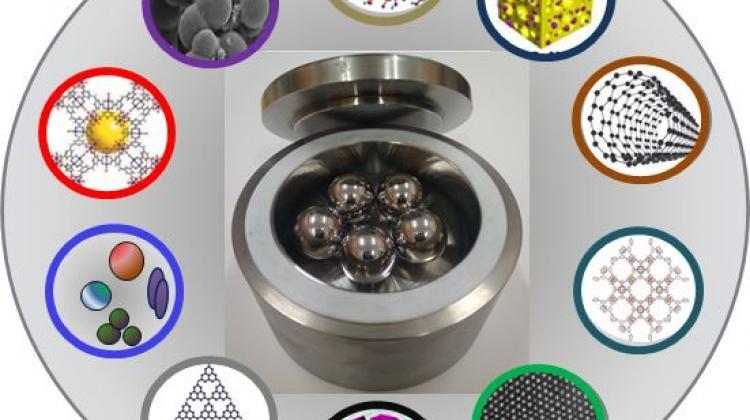Scientists looking to improve ways of obtaining highly porous materials
 Photo: press materials
Photo: press materials
Because of free spaces in their structure, porous materials can absorb air and water pollutants, store and convert energy, act as catalyst carriers and find applications in biomedicine. Scientists are now working on improving methods of obtaining highly porous materials, including ball milling.
Under the supervision of Professor Jerzy Choma in collaboration with Professor Mieczysław Jaroniec from Kent State University in the USA, researchers at the university’s Faculty of New Technologies and Chemistry are looking at the mechanochemical synthesis of highly porous materials.
Mechanochemical methods can be used to obtain carbon materials, metal-organic networks, metal oxides and various composite materials.
The ball milling method is used to grind materials and synthesize organic compounds, but in scientific laboratories ball milling is increasingly used to synthesize various nanoporous materials.
According to the researchers, the kinetic energy generated during ball milling is enough to break existing chemical bonds and create new ones.
Therefore, these methods are now more often proposed for the economic and ecological production of useful advanced materials, including highly porous materials.
Dr. Barbara Szczęśniak from the Military University of Technology said: “Porous materials have pores in their structure, free spaces, which provide a large specific surface. This results in good absorption and storage of, for example, carbon dioxide, vapours of volatile organic compounds or pure energy carriers such as hydrogen and methane. Depending on the purpose of these materials, microporous structures with pores up to 2 nm and mesoporous structures with pores ranging from 2 to 50 nm can be obtained.”
The year 1992, when the synthesis of siliceous materials with ordered mesopores was published, is considered one of the milestones in the history of porous materials.
PAP - Science in Poland
kol/ zan/ kap/
tr. RL
Przed dodaniem komentarza prosimy o zapoznanie z Regulaminem forum serwisu Nauka w Polsce.














